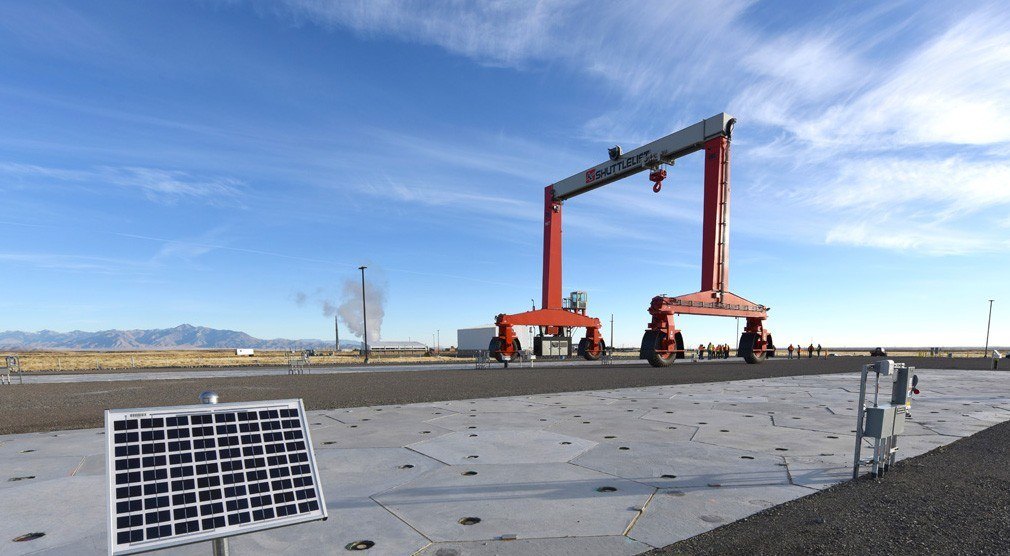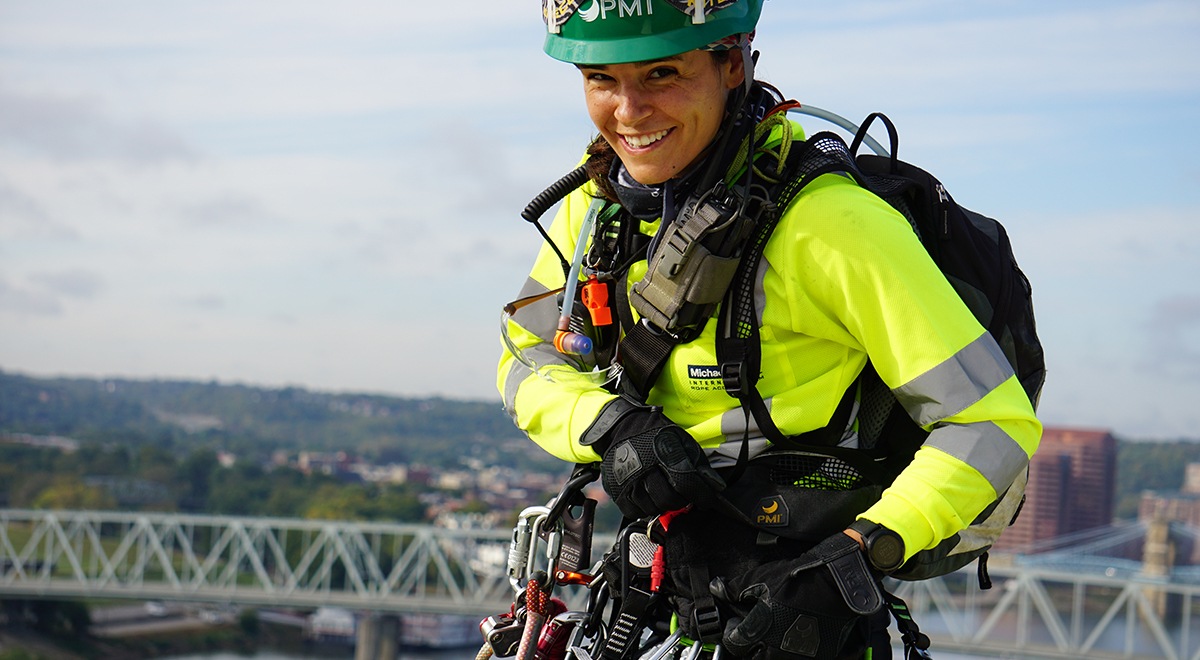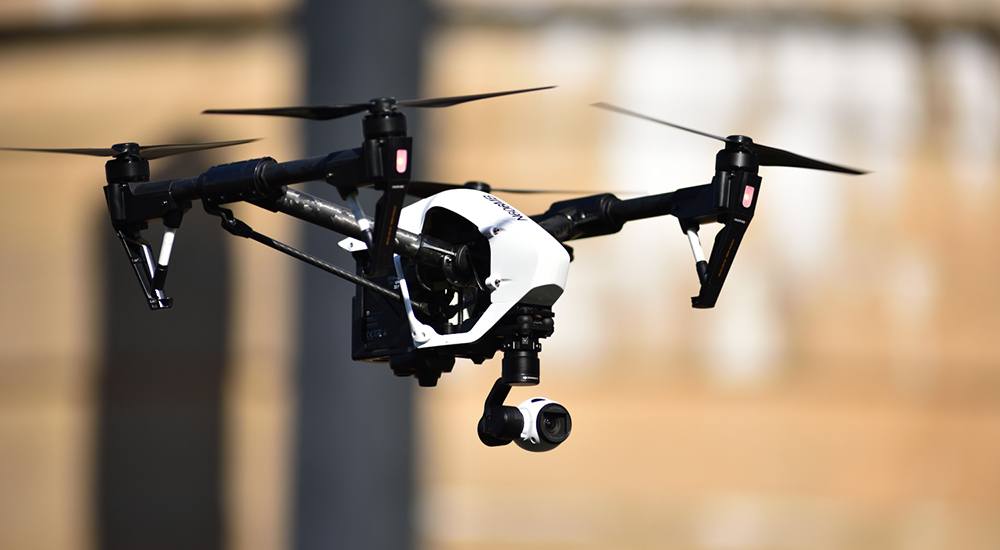Michael Baker International applies innovation to the challenge of safely disposing of nuclear waste
From the Winter 2019 issue of Signature
For 70 years, the Idaho National Laboratory (INL) has served as a cornerstone in America’s development of peacetime uses of nuclear technology, a site where dozens of reactors have been studied, tested, assembled and ultimately decommissioned. Located across a sprawling 890 square miles in Butte County, the U.S. Department of Energy’s (DOE) INL site includes the Advanced Test Reactor Complex, the Materials and Fuels Complex, the Idaho Nuclear Technology and Engineering Center and the Naval Reactors Facility.
A byproduct of this work is low-level nuclear waste that must be disposed of in a safe, reliable, lasting manner. In the past, DOE and the facility’s primary operating contractors, Fluor Idaho and Battelle Energy Alliance, LLC, (BEA) disposed of the waste in an on-site subsurface disposal area, and in later years shipped some of it off-site. As the thinking about nuclear waste evolved — and its regulations tightened — DOE sought a more permanent solution to disposal.
In 2014, BEA and its design-build subcontractor, Orano (previously Areva) Federal Services, LLC, engaged Michael Baker International to design a remote-handled, low-level waste (RHLLW) disposal facility for permanent disposal of INL’s waste, and to provide all associated civil, mechanical, structural, electrical, plumbing and fire protection engineering services.
The new $77.6 million complex would eliminate the need for radioactive material transports across public roadways while reducing disposal costs, and capitalize on an existing, experienced workforce for disposal operations. The project also would include an administration building and a maintenance facility, all with utilities provided through connections to existing services.
It was a sensitive, complex task to be sure, and it became even more so when DOE specified that, to ensure long-term safety and security, the disposal site would need to maintain its integrity for at least 500 years.
SUBSURFACE DISPOSAL VAULTS OF REINFORCED CONCRETE
In a way, the term “low-level waste” is misleading, suggesting that this material is not particularly hazardous. The contaminated materials include irradiated metal components and ion exchange resins, as well as incidental debris such as rags, mops, filters, shoe covers, clothing, equipment and tools. The radioactivity of such detritus covers a wide range, from just above background levels to extreme radioactivity.
In fact, the complex produces three types of waste — resins, activated metals and miscellaneous debris — much of it presenting an exposure risk to humans. David Stephens, P.E., Structural Engineer in Michael Baker’s Idaho Falls office who served in various lead roles on the project confirms:
“Low-level does not necessarily mean low-level radiation,” he says. “Low-level is defined as a certain type of waste that includes items that have become contaminated with radioactive material or have become radioactive through exposure to neutron radiation.”
For burial of the waste, the Michael Baker team designed an entombment site encompassing 11 acres and including approximately 450 subsurface disposal vaults, of varying sizes, constructed of precast, reinforced concrete manhole-like sections. The waste, in most cases, has been previously placed or will be placed in protective stainless-steel canisters — up to 939 of them. A 150-ton, remotely operated crane lowers the stainless-steel canisters into the vaults, sometimes several to a vault.
A primary project requirement was to minimize the land area required to dispose of the slated volume of waste. This drove the placement of cylindrical vaults such that each was in contact with six adjacent vaults. This created a hexagon shape to close off the space above and below each vault. This tight spacing naturally created the needed shape for both the vault base and plug.
Identifying a mix for concrete that lasts 500 years was challenging but may not have been the project’s biggest hurdle. Stephens notes that the team was able to find the right concrete mix with only a few modifications to commonly used precast concrete mix designs. Fabricating the concrete vault sections, however, was a different story.
“In the precast concrete fabrication process, anomalies can occur,” Stephens says. “Sometimes the concrete does not fully consolidate, leaving defects such as ‘honeycombing’ or ’bug holes.’” Other problems that can occur after curing are chipping, spalling and cracking. These imperfections can create potential pathways for water intrusion. All imperfections larger than a certain size had to be addressed. “We evaluated each piece and specified any necessary repairs,” says Stephens. Only one component of the more than 1,500 had to be discarded and a replacement recast.
NO WATER, NO SALT, PLEASE
Just as important as perfecting the concrete fabrication process was creating the right underground environment for the disposal site.
“If you want concrete to last 500-plus years, one main objective is to isolate it from the environment so ground water carrying certain dissolved substances from the soil cannot attack,” Stephens notes. Soils at the INL site can contain salts such as chlorides, sulfates, carbonates, sodium, calcium, magnesium and potassium. “If you can keep concrete from getting wet in such an environment, properly mixed and formed concrete can last well over 500 years,” he says.
The site’s design creates a favorable environment in several ways. First, the team designed vertical and horizontal layers of free-draining rock to surround the buried vaults.
“Any water that might be flowing through the ground near the vault array will hit those layers of rock and flow downward instead of into the array,” Stephens adds.
In addition, the design employs a similar technique for spaces between vaults, where free-draining pea gravel is used to keep the area from retaining moisture.
Finally, the vaults are topped by five-foot-thick reinforced concrete plugs that provide radiological shielding, as well as security. Once the plugs are lifted and the waste is remotely inserted in the vaults, the plugs are replaced, helping to ensure the integrity of the vaults.
The massive crane provided yet another challenge. When it is lowering canisters, the crane must straddle vault array sets, which introduces the possibility of soil disturbance and shifting.
“The crane puts a heavy load on the soil adjacent to the vault array,” Stephens says. “We had to carefully evaluate the soil, and specify the types of soil to be used, so that crane operations would not displace any of the concrete components. This was critical to ensure that the top shielding plugs could be removed and replaced as needed during the disposal phase.”
Brady J. Orchard, P.E., PMP, INL’s Project Director for the Materials and Fuels Complex, notes that the crane cannot be operated in the standard manner.
“It is configured to support remote operation via a control pendant, minimizing potential worker radiation dose,” Orchard says. “The configuration of the crane is a critical component in helping ensure worker safety and enables operations to be conducted in a more efficient manner than would be capable utilizing a standard boom crane.”
And what of the rigging used for lifting and lowering canisters? Because humans are not be permitted near the inserted waste, the design had to pay special attention to them as well.
“Once inserted into the vault, by design, neither the canisters nor the rigging can be retrieved. You cannot have personnel near the opening of the vault array,” Stephens says. “The rigging, made from wire rope slings, is remotely disengaged and simply falls into the vault.” They, too, become part of the five-century package.
“The project went to great lengths to make sure that, once the waste was inserted in the vaults, it would be virtually impossible to retrieve,” says Stephens. For example, once each vault has been filled and the shield plug has been placed on the vault for the last time, the lifting lugs for the plug will be grouted in, preventing use of the lugs in the future.
At completion of the operational life of the disposal facility, a long-term protective soil cover will be placed over the waste disposal vaults. This final closure cover will be an evapo-transpiration barrier that will cover the entire disposal facility and further protect the waste material from contact with infiltration water. This barrier will include a vegetated soil layer, an underlying coarse rock layer, a low-permeability layer and grading fill material. The barrier will be configured to divert all surface water away from the disposal vaults and extend beyond the boundary of the facility.
ADDITIONAL CAPACITY IF NEEDED
The project team delivered the RH-LLW project six months ahead of schedule and $4.7 million under the congressionally authorized budget.
Perhaps most importantly, the RH-LLW represents the culmination of a decade-long effort to provide permanent, environmentally responsible disposal capacity at the INL site, enabling the laboratory to continue its nuclear energy research mission. And it can do so secure in the knowledge that the waste disposed of will be harmless for at least the next 500 years. The vaults give DOE tremendous disposal capacity. Should more be needed, Michael Baker’s design incorporates expanded capacity. As Orchard puts it:
“The completed facility is essential to the continuing mission activities of the DOE Office of Nuclear Energy and DOE-Naval Reactors, underpinning development of carbon-free nuclear technologies and national defense. Without continued RH-LLW disposal capability, critical mission activities would be significantly hindered.”
Today, the site is a model of solid science and sophisticated design that was recognized by Engineering News-Record when it presented the initiative with two Merit Awards — one for the Specialty Construction category and one for the Safety category — during its recent Mountain States Region 2019 Best Projects awards event. The project also received the DOE Project Excellence Award in April 2019 and Project Management Institute Project Excellence Award for North America Region.




